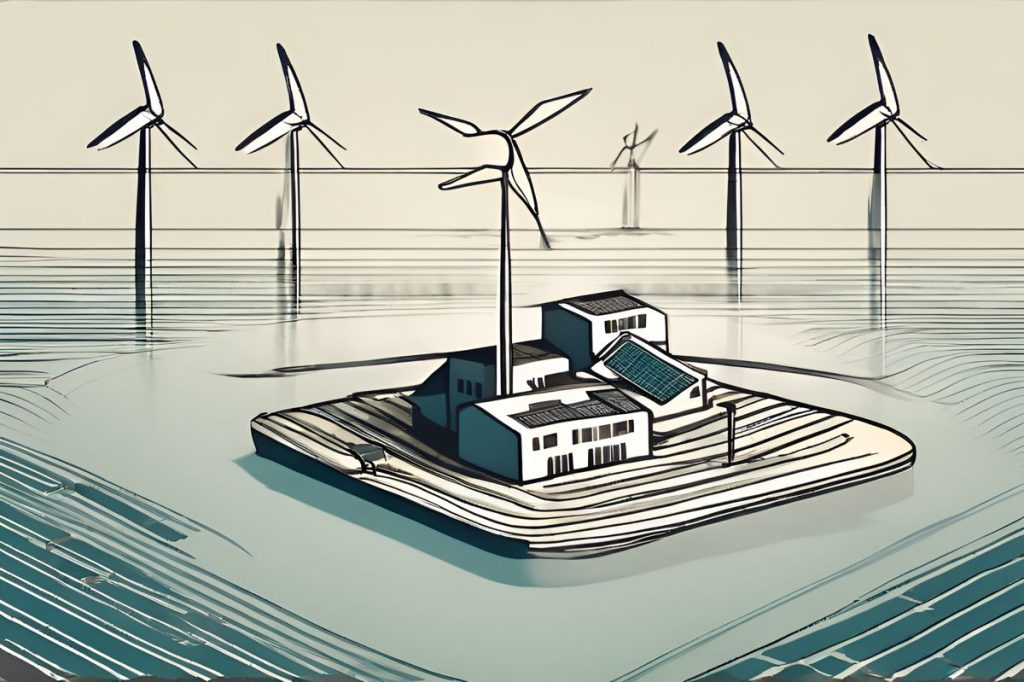As Cyprus takes the lead as the 2024 president of the Med9 group, it aims to create a green energy corridor that will turn the Eastern Mediterranean into a sustainable energy hub. This ambitious initiative, highlighted by Energy Minister George Papanastasiou, seeks to reduce electricity costs, ensure energy stability, and promote regional peace while addressing climate change challenges.
What is Cyprus’ priority as the 2024 president of the Med9 group?
Cyprus’ priority as the 2024 president of the Med9 group is to establish a green energy corridor. Aimed at transforming the Eastern Mediterranean into a sustainable energy hub, this initiative seeks to foster a shift towards renewable energy, reduce electricity costs, ensure energy supply stability, and promote regional peace and energy security.
A Mission for Green Transformation
Cyprus is taking the helm as the 2024 president of the Med9 group, which comprises nine Mediterranean EU countries. At the forefront of their agenda is a pivotal and ambitious project: the creation of a green energy corridor. During a recent conference addressing climate issues in the Eastern Mediterranean and Middle East region, Energy Minister George Papanastasiou emphasized the urgency of this initiative. The group’s vision—an interconnected, sustainable energy network—was thoroughly discussed and shaped at the ministerial conference on September 23.
The Eastern Mediterranean is currently on the cusp of becoming a climate change hotspot. This has been evidenced by the increased frequency of natural disasters such as floods and wildfires. Papanastasiou pointed out that the region is facing these climate challenges head-on and is poised to leverage its unique position. By tapping into the area’s potential for renewable energy, an innovative and sustainable energy model could emerge, one that transforms the Eastern Mediterranean into a vital energy hub for the EU and its neighbors.
Infrastructure and International Cooperation
The notion of the Mediterranean as a green energy nexus involves a complex weave of policies and infrastructural advancements. Minister Papanastasiou highlighted that the effective implementation of such a strategy would serve dual purposes. Firstly, it would tackle environmental issues by fostering a shift towards clean energy. Secondly, it would lay the groundwork for international partnerships, crucial for a robust energy security framework.
Cyprus is aligning its national energy strategy with these objectives, focusing on three key areas: reducing electricity costs, ensuring a stable supply of energy, and progressing towards a swift energy transition. Though the country recognizes the role of natural gas as a transitional energy source, the ultimate goal remains climate neutrality. Papanastasiou also underscored the diverse renewable energy prospects across the region, suggesting that a customized energy strategy could be a catalyst for regional stability, economic well-being, and collective action against climate change.
Advancing Regional Peace and Energy Security
In the quest for a sustainable future, Cyprus is not alone. Each nation in the Med9 group brings its own strengths and challenges to the table. By considering the unique renewable energy potential and specific circumstances of every country, a collaborative and tailored approach to regional energy policies can be developed. Such strategies are not just about combating climate change; they are about fostering peace.
The Eastern Mediterranean holds the key to a grid that’s not only green but also serves as a lifeline for countries seeking energy independence and security. The establishment of a green energy corridor could be transformative, not just for the environment, but for the geopolitical landscape as well. With Cyprus at the presidency of the Med9, the region is on the verge of an energy revolution—one that promises a future of both ecological and diplomatic harmony.
“`markdown
What is the primary goal of Cyprus as the 2024 president of the Med9 group?
Cyprus aims to establish a green energy corridor to transform the Eastern Mediterranean into a sustainable energy hub. This initiative focuses on promoting renewable energy, reducing electricity costs, ensuring energy stability, and fostering regional peace while addressing climate change challenges.
How will the green energy corridor impact regional energy security?
The green energy corridor is designed to enhance regional energy security by creating an interconnected and sustainable energy network among Med9 countries. By aligning national energy strategies and fostering international cooperation, the initiative aims to reduce dependence on fossil fuels, promote energy independence, and stabilize energy supplies across the region.
What are the key areas of focus for Cyprus’s national energy strategy?
Cyprus’s national energy strategy centers on three primary goals: reducing electricity costs, ensuring a stable supply of energy, and accelerating the transition towards climate neutrality. While the country acknowledges the role of natural gas as a transitional energy source, it remains committed to advancing renewable energy prospects unique to the region.
How does the green energy corridor relate to climate change and regional peace?
The establishment of the green energy corridor serves a dual purpose: it addresses environmental issues by promoting clean energy solutions and fosters collaborative regional policies to enhance peace. By leveraging the unique renewable energy potential of each Med9 country, the initiative aims to create stability, economic well-being, and a unified response to climate change challenges in the Eastern Mediterranean.
“`

